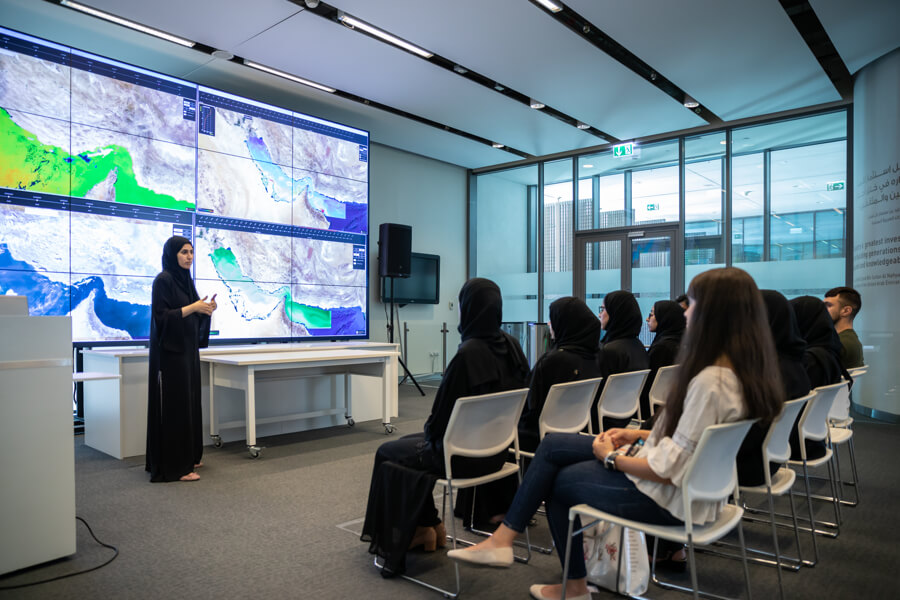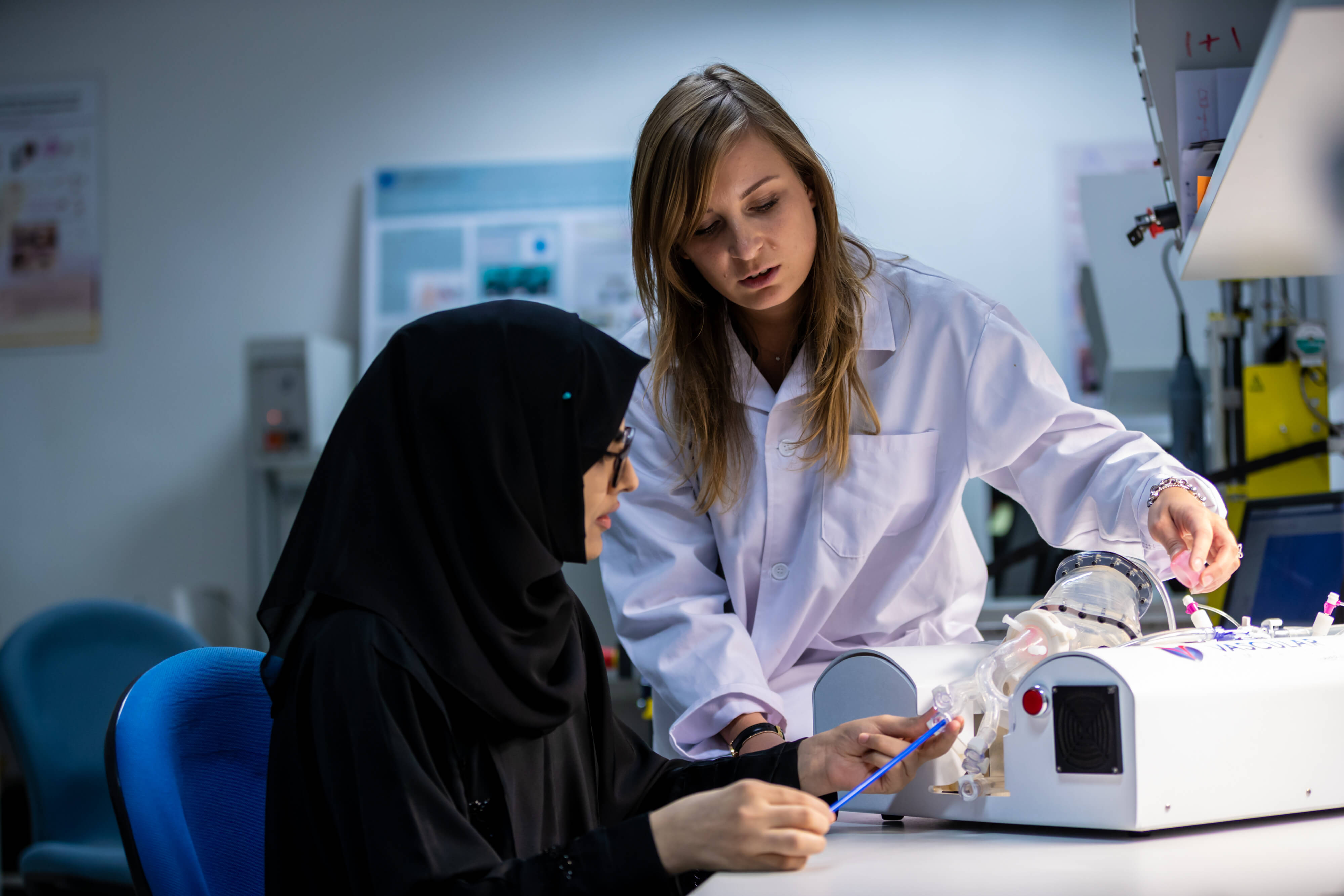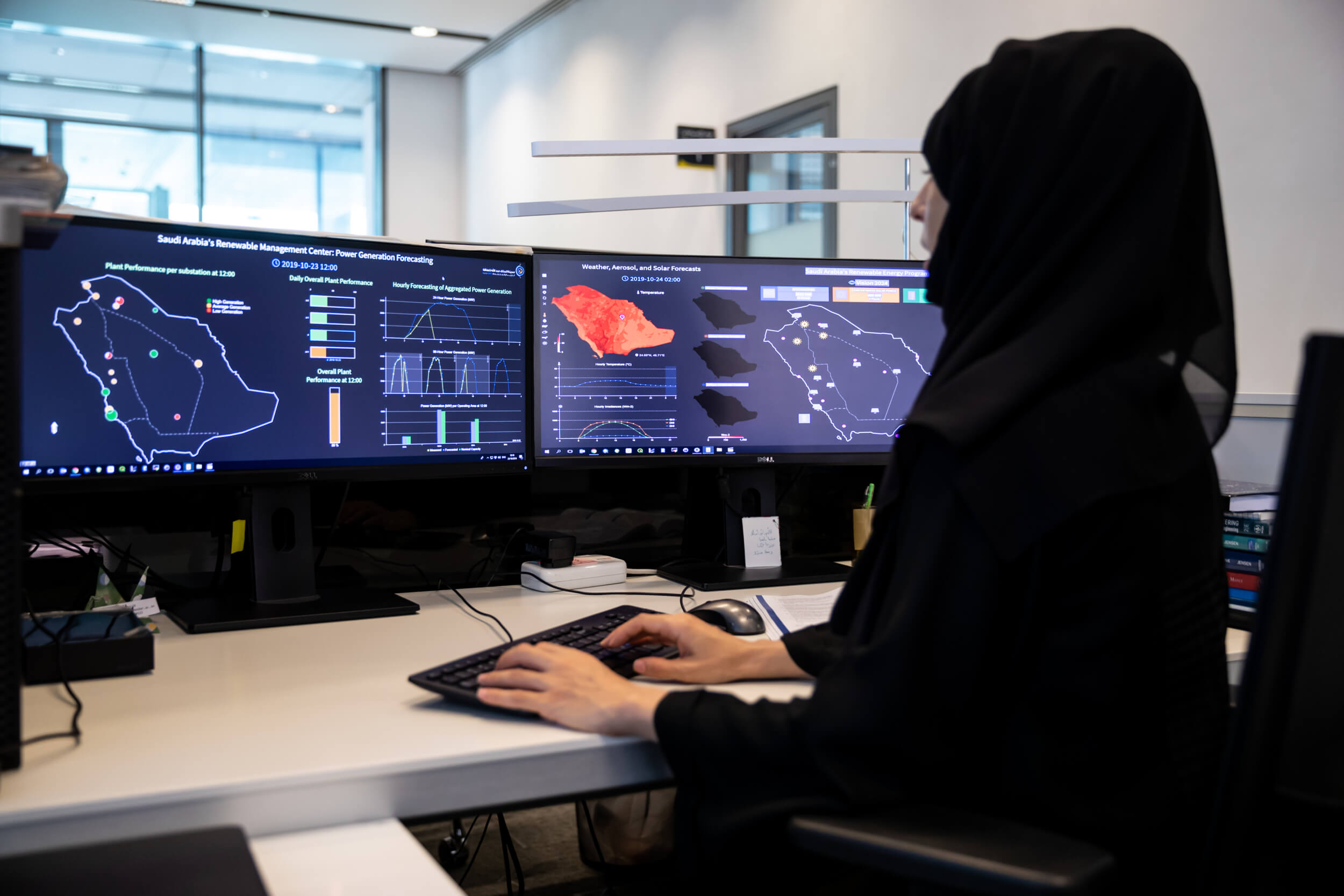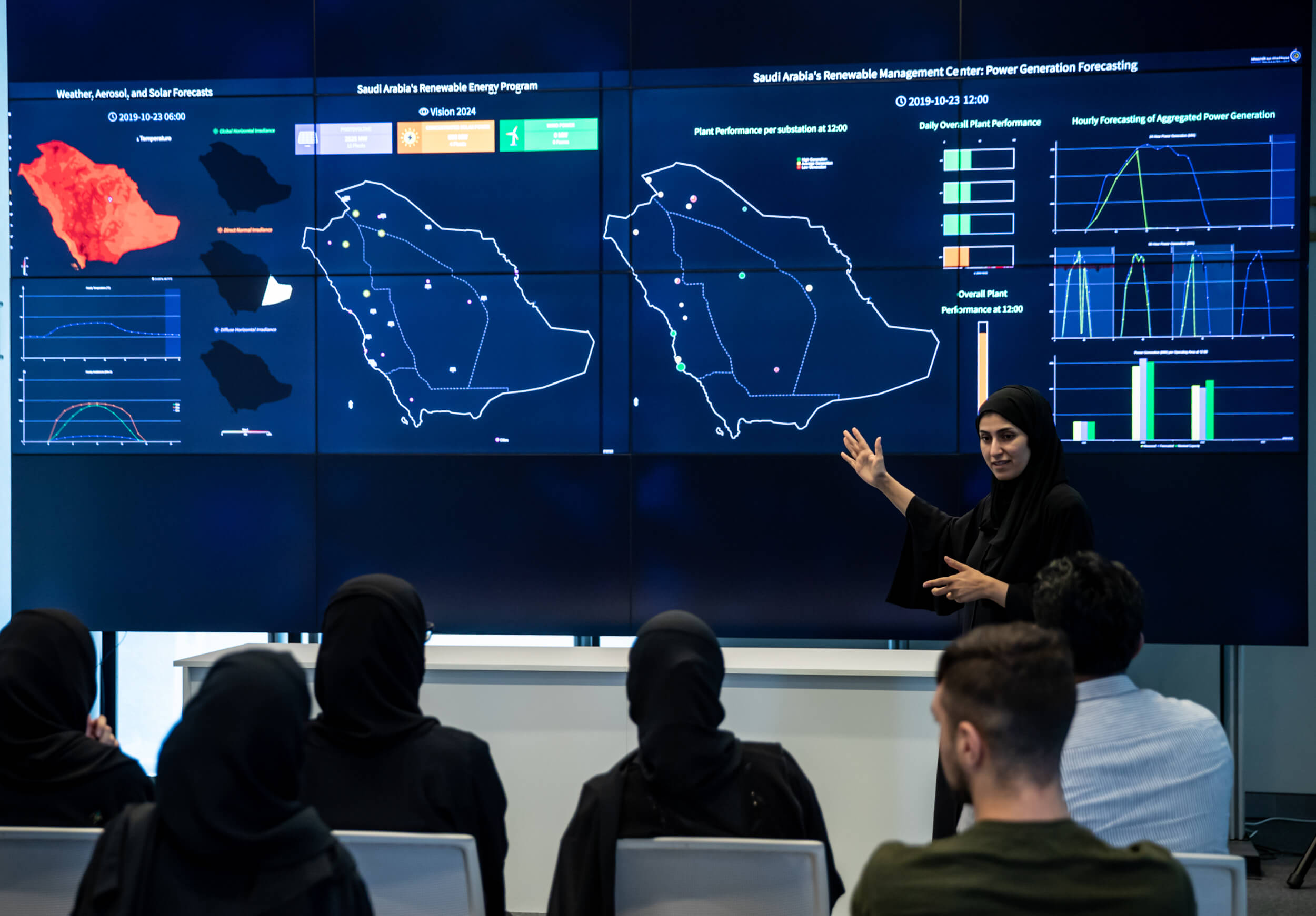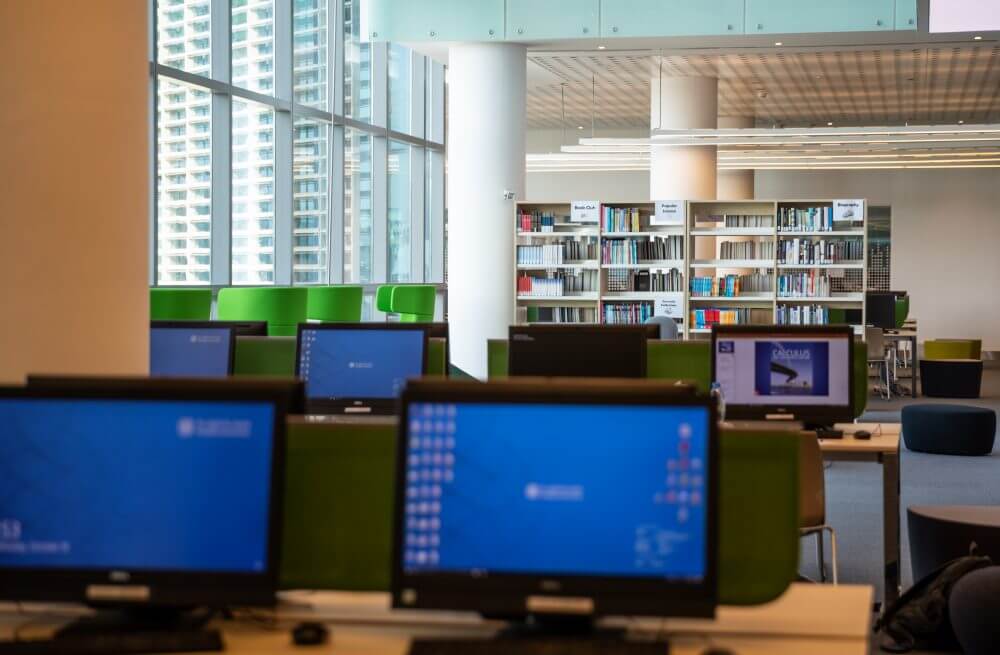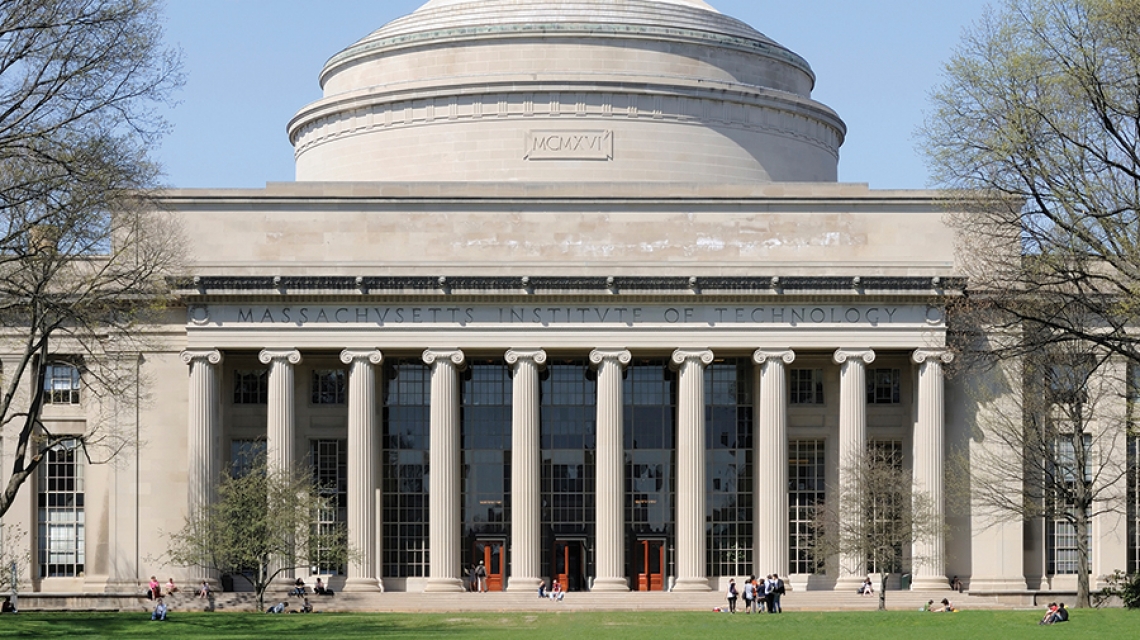
They came to MIT on different schedules, from different academic backgrounds, with different research and educational goals. But the four junior faculty members from a growing technology university in the United Arab Emirates (UAE) all described their time at MIT in much the same way: a transformational opportunity for themselves and, ultimately, for their students as well.
“I would categorize it as a life-changing experience,” says Aamena Alshamsi, assistant professor of computing and information science at the UAE’s Masdar Institute of Science and Technology. While she has collaborated with MIT colleagues before, it’s typically been from half a world away. “The face-to-face interaction is very effective in research,” says Alshamsi, who, like her colleagues, spent her time in Cambridge working one-to-one with an MIT researcher on a joint research project. “Sometimes you just need to be in the same place.”
Masdar Institute is a research-focused graduate university in Abu Dhabi, the UAE’s capital city. The MIT and Masdar Institute Cooperative Program (MIT/MI Cooperative Program) began assisting Masdar Institute in December 2007, and the two institutions have collaborated on research, academics, and other activities ever since. Those activities include an exchange program that allows Masdar Institute faculty to spend up to one year at MIT, working with MIT faculty on joint research projects — especially those with application to the UAE — and auditing graduate courses.
The program is designed to expose visiting faculty to MIT’s academic culture and research practices, allow them to share their own expertise with their Cambridge colleagues, and return to the UAE with new ideas for both their classrooms and their labs. Masdar Institute selects participants based on their proposals; the MIT/MI Cooperative Program Office at MIT coordinates the experience on campus.
While Masdar Institute is a highly multicultural university, enrolling master’s and PhD candidates from more than 50 countries, the four recent visiting professors all happen to be Emiratis. All had previously worked or studied outside the UAE in locations such as Australia, Germany, Japan, and elsewhere in the United States, but all called the MIT-based experience unique.
Collaboration on MIT’s campus
Auditing MIT classes proved especially valuable for Ibraheem Almansouri, assistant professor of microsystems engineering and computer science at Masdar Institute. “You get the theory in the classroom, and then you go to the lab to practice hands-on,” says Almansouri, whose research focuses on renewable energy technologies, which UAE leaders consider critical for meeting their nation’s future energy needs.
At MIT, Almansouri was especially impressed by the widespread willingness to collaborate at every level. “The faculty shared their knowledge, but it’s not just the faculty,” says Almansouri, who conducted research on photovoltaic technology with Jeehwan Kim, the Class of 1947 Career Development Assistant Professor in the departments of Mechanical Engineering and Materials Science and Engineering and principal investigator in the MIT Research Laboratory of Electronics. “They recruit the right students, and I interacted extensively with students in my group” as well.
For Khaled Alawadi, spending time at MIT provided new perspectives for his research into urban design and infrastructure, specifically in the UAE’s second-largest city. “The urban environment in Abu Dhabi is very different than the urban environment in Boston or New York,” says Alawadi, an assistant professor of engineering systems and management at Masdar Institute. He describes Abu Dhabi as a sprawling, fast-growing metropolis of nearly 2.8 million residents. “It’s very difficult to navigate through the city,” explains Alawadi, who is developing a master’s program in sustainable critical infrastructure planning at Masdar Institute, using the surrounding area as a testing ground.
His burning question: “What is the neighborhood of the future — the sustainable neighborhood of the future — for Abu Dhabi?” And, he adds: “How can we make suburbs more sustainable and liveable?” While at MIT, Alawadi worked toward answering those questions through collaborative research with Alan Berger, the Norman B. and Muriel Leventhal Professor of Advanced Urbanism and co-director of the Leventhal Center for Advanced Urbanism. “Urban design matters for building sustainable cities. This reflects the rebirth of physical planning in scholarship and practice,” Alawadi says. “It’s been a really good experience to be in this kind of atmosphere.”
Alshamsi agrees. “You are discussing your ideas with other people, and you are being exposed to the latest research. In my case, I’m not just working with people in my own area. I’m working with physicists and economists and others.”
Mapping the future: New products, renewable energy
During her time at MIT, Alshamsi collaborated with César Hidalgo, the Asahi Broadcasting Corporation Associate Professor of Media Arts and Sciences at the MIT Media Lab, on strategic diffusion in complex networks — specifically, exploring where the UAE should focus its efforts in its ongoing transformation from an oil-based economy. “We have diversified our economy, but we need to know the next steps, the next products we will make for export to other countries,” Alshamsi explains. “The economic diversification is one application of the strategic network-diffusion problem that is addressed in the joint project.”
The visiting professors all continued advising their UAE-based PhD students while studying and conducting research at MIT. That required constant juggling, notes Khalid Al-Ali, an assistant professor of chemical and environmental engineering at Masdar Institute: “It was quite challenging, especially with the time difference.” (Depending on the time of year, clocks in the UAE are either eight or nine hours ahead of the eastern United States, meaning that by mid-morning in Cambridge, it’s after business hours in Abu Dhabi.)
While at MIT, Al-Ali collaborated with William H. Green, the Hoyt Hottel Professor of Chemical Engineering, on research into using the UAE’s abundant supply of solar energy to convert hydrogen sulfide, an oil-refining waste product, into hydrogen for environmental and practical applications. He also audited a graduate chemical-engineering course and is adapting that class’ syllabus for use at Masdar Institute later this year.
For Al-Ali, the program’s real value was in supporting two institutions’ collaborative efforts on research projects — and involving newly hired junior faculty on such high-priority projects. He said he would encourage other Masdar Institute faculty members to consider the program.
The other visiting scholars agree. “This was an important step in my career,” says Alshamsi (who made Masdar Institute history in May 2015, when she became one of the first two students to receive PhDs from the still-young university). “I would recommend it to all new faculty — or, really, to all faculty.”
MIT and Masdar Institute Cooperative Program
13 April 2017
*Republished with permission from MIT News. Original story can be seen at http://news.mit.edu/2017/visiting-uae-professors-describe-life-changing-experiences-mit-0413


